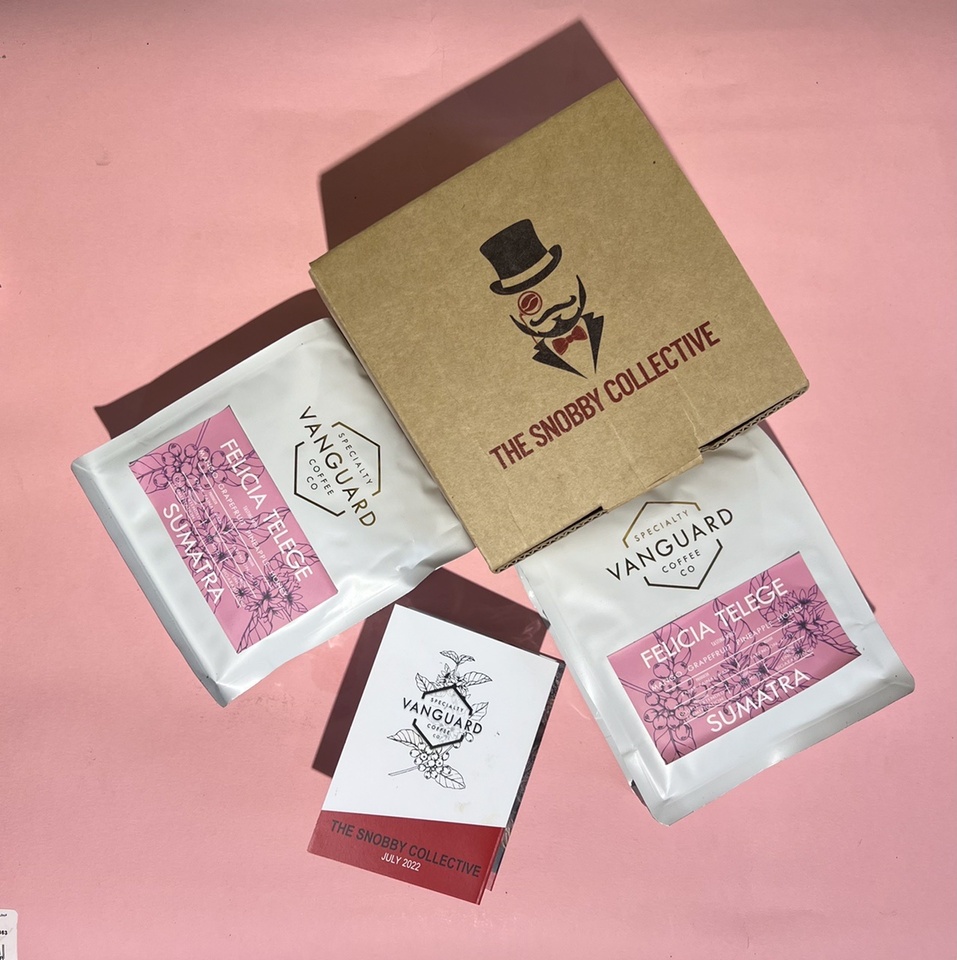July 2022
We've shared coffee form Sumatra, Indonesia before. October 2021 to be exact. An origin we wante to explore some more. As we rounded out our showcase of South America, a tip of the hat to a group of countries that we feel are leading the way with innovative processing, Vanguard Coffee Co reached out with "an Indo like no other Indo you've ever had".
An offer we couldn't refuse, settling on telling its story during July.
GUIDED BY BELIEFS
As history tells it, Coffee has spiritual or religious origins in its story, typically beginning with goats and a priest in Ethiopia. Fast forward a few hundred years and we have another story of coffee intertwined with religious beliefs and customs.
This lot from Telege was named Felicia after a local word for happiness, by Opal Coffee after their initial visit to the farm of Bapak Man and tasting the first coffees from Bapak’s farm. The lots, one of which we share today. Lot 1 was inspired by Muslim beliefs, meaning no alcohol shall be consumed or sold in the land of Aceh. Commonplace in Sumatra is natural or dry processing of coffee. Conversely, Sumatra, like many origins, is beginning to experiment with rare varieties and alternative, often innovative processing techniques, namely fermentation. The double, extended natural fermentation process of this coffee replicates some characteristics of alcohol, the sweetness provided by the fermentation with bright flavours and aromas.After processing at the farm, Opal coffee undertook hand sorting at their family farm, Wahana estate, ahead of it being transported to Medan ahead of its journey to Lyttleton, NZ. Part of a container load of Indonesian coffees sourced by Opal Coffee for the New Zealand market.
WHAT’S IN A NAME
Sigarar Utang, Jember, Ateng, Ateng Julak, Lini(e) S, S795; All given names for one Indonesian variety, an Arabica Robusta hybrid of S228 and Kent (disease resistant Typica selection) lineage.
Deciphering the names. ‘S’ refers to selection, similar to that of the SL Kenyan varieties referencing Scott Laboratories’ selections. While the variety originated in India during the 1940s, the name Jember arose from the regency (second tier administrative division) of Jember, in which the research station responsible for distribution during the 1980s of the seedling was located. Local farmer, Tengu Ibrahuim noticed one of the plants was considerably different from the others in his distribution, having produced considerable fruit a year ahead of the others. This prompted Tengu to propagate this over performer for mass planting.
The name Ateng, given around the time the variety spread through the Gayo highlands, came from a reference to a famous dwarf comedian, a parallel to the swarf stature of the shrub.
Sigarar Utang, translates to repay debt faster. An acknowledgment of the varietals high performance. Development of the variety, carried out by Jemba research facility, bestowed the name Ateng Julak Catimor selection ahead of the 2005 Ministry of agriculture endorsement of the variety, issuing the reference: 200/Kpts/SR.120/4/2005
OBSCURED DIVERSITY
Outside of the top 3 of any comprehensive list, any contender falls into obscurity. Coffee is no exception. Sitting between Colombia and Ethiopia, Indonesia holds the number four spot. An industry populated by small lot holders (approx 99%), Indonesia produces both the Ethiopian native Coffea Arabica and the west African Coffea Cenephora (Robusta) resulting in one of the most diverse coffee origins in the world, including being home to the famous Kopi Luwak.
Arabica produced in Indonesia, is largely graded as specialty, with much of it marketed by their geographic growing locations, such as Sumatra (Java etc) with over thirty regions being registered with the Indonesian Ministry of Law and Human Rights, as a way to identify their uniqueness in the market. A similar scenario to Ethiopias’ growing regions, which include the famously trademarked regions of Yirgacheffe, Simada and Guji.
While Indonesia is no small fish in the pond that is global coffee production and despite it employing 1.77 million people in the republic, its earning (GDP) potential pales in comparison to that of other agricultural practices, such as oil palm and rubber and cereal. With these competing crops providing larger returns, investment in research is directed to the area of greatest return. The result of which has seen coffee’s contribution to GDP drop by 2/3 over the last ten years.
|
© Copyright A Bunch of Snobs |

